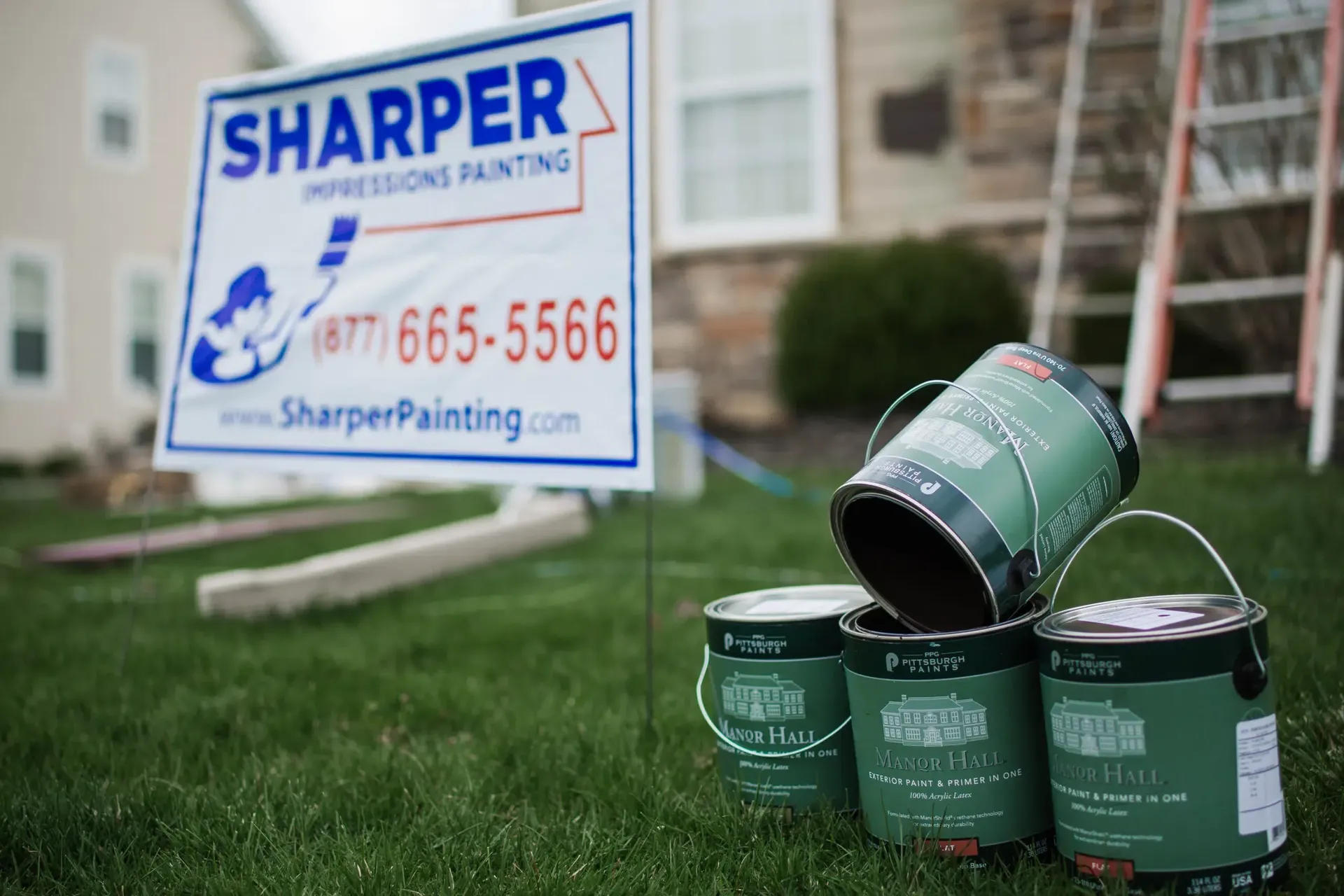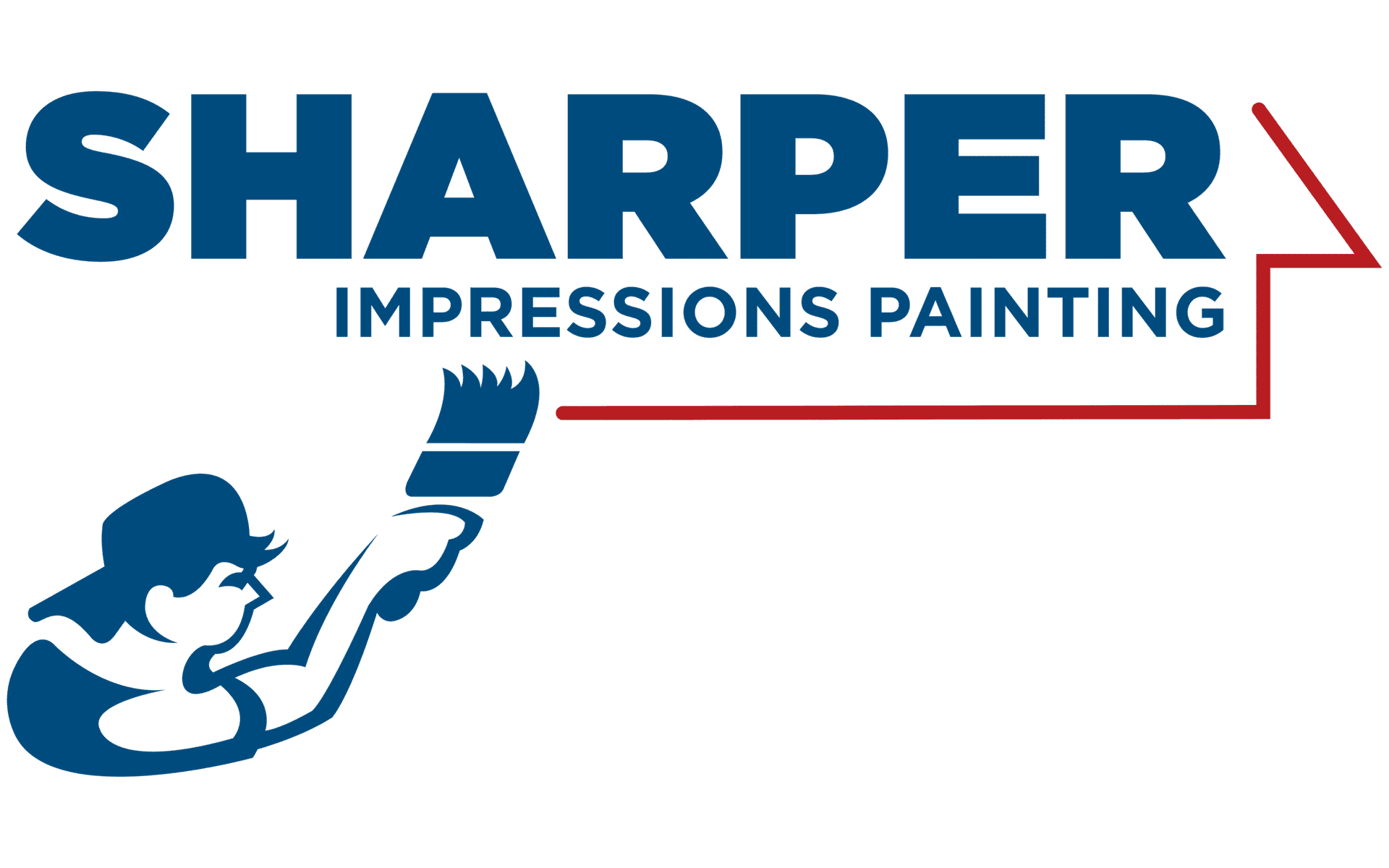Painting Resources for the Greater Indianapolis, IN Region
How to Avoid Bubbling Paint in Spring: 7 Smart Advice for Carmel, IN Homeowners
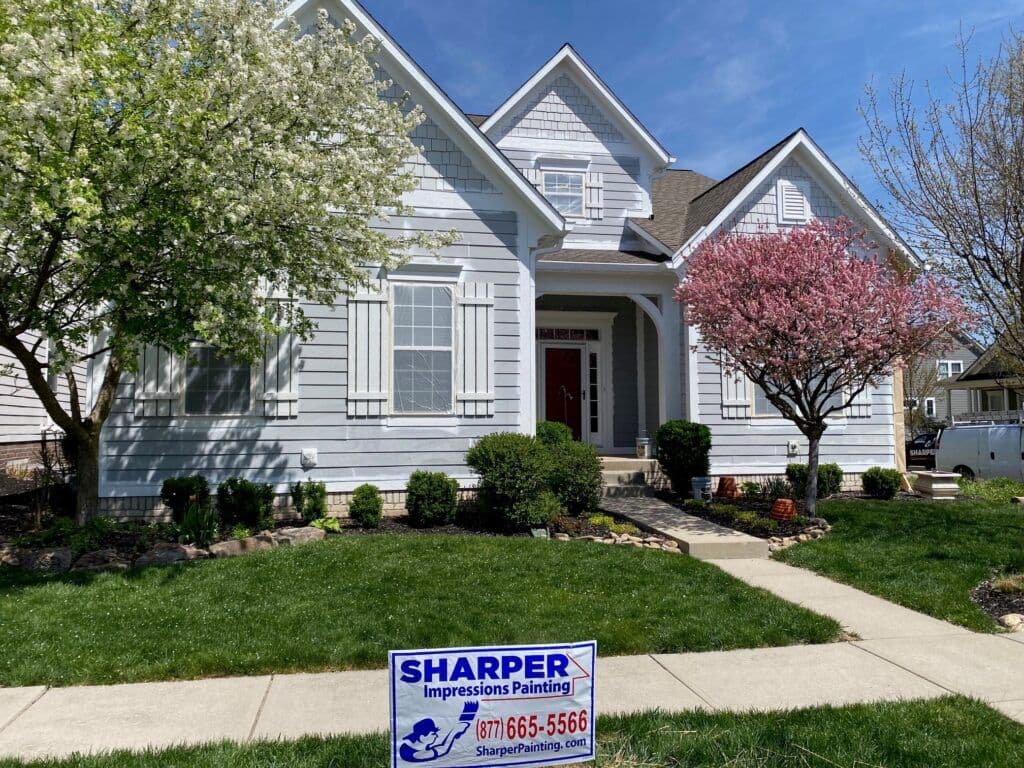
Schedule Your Quote Today!
25% Off
Ends 10/31
By submitting this form, you consent to receive SMS messages and/or emails from our company. To unsubscribe, follow the instructions provided in our communications. Msg & data rates may apply for SMS. Your information is secure and will not be sold to third parties.
If you’re thinking about how to avoid bubbling paint in spring, especially during exterior house painting in Carmel, IN, there’s a lot you’ll want to know before you pick up that brush. Around here, spring brings unpredictable weather—warm one minute, raining the next. And while it’s a great season to update your home’s exterior, it can also be risky if you’re not ready for how weather impacts exterior painting.
I’ve seen more than a few homeowners frustrated by what looked like a flawless finish, only to ask weeks later, why is my paint bubbling? Let’s talk about what causes these issues and how to dodge them.
Key Takeaways
- Always allow siding to dry for at least 48 hours before applying paint to avoid bubbling.
- Rushing exterior painting in spring can lead to bubbling—wait for dry, mild weather conditions.
- Use primer to create a strong base, especially on raw or porous surfaces, to prevent bubbling.
- Choose high-quality paint that’s flexible and breathable, especially in humid spring weather conditions.
- Thorough surface prep, including cleaning and sanding, is essential to ensure paint adheres properly and lasts.
The Big Culprit: Weather + Timing
Can Rain Really Ruin Fresh Paint?
Absolutely. In fact, rain causes exterior paint to bubble. It is one of the most common questions I get each spring. And the answer is yes—especially when the paint hasn’t had time to fully dry or the surface wasn’t dry to begin with.
Humidity, surprise storms, and damp mornings all play a role in how weather impacts exterior painting. Add in Carmel’s temperature swings, and you’re looking at prime conditions for bubbling paint exterior problems.
How to Avoid Bubbling Paint in Spring? What are the Things to Avoid?
1. Painting on Wet or Damp Surfaces
One spring, we got a call from a homeowner who tried painting their garage siding two days after pressure washing. The result? Massive bubbling, paint peeling, and a complete redo.
Always give siding at least 48 hours to dry after any wash. If there’s rain or even heavy morning dew, you’ll need more time. Moisture trapped under the paint leads directly to paint bubbling.
If you’re not sure, grab a moisture meter—or better yet, let a pro double-check it before applying anything.
2. Rushing the Job Between Rainy Days
Spring painting feels like a race against the clouds, but shortcuts don’t help. Trying to squeeze in a quick coat before the next rainstorm is one of the easiest ways to create paint blistering.
Even if you have a clear morning, the surface can still be too wet. And if the second coat goes on too soon? That’s another setup for trouble. It’s all about knowing the best time to paint exterior surfaces—and that means waiting for clear, mild conditions.
Aim for at least three dry days in a row with temps between 55–75°F.
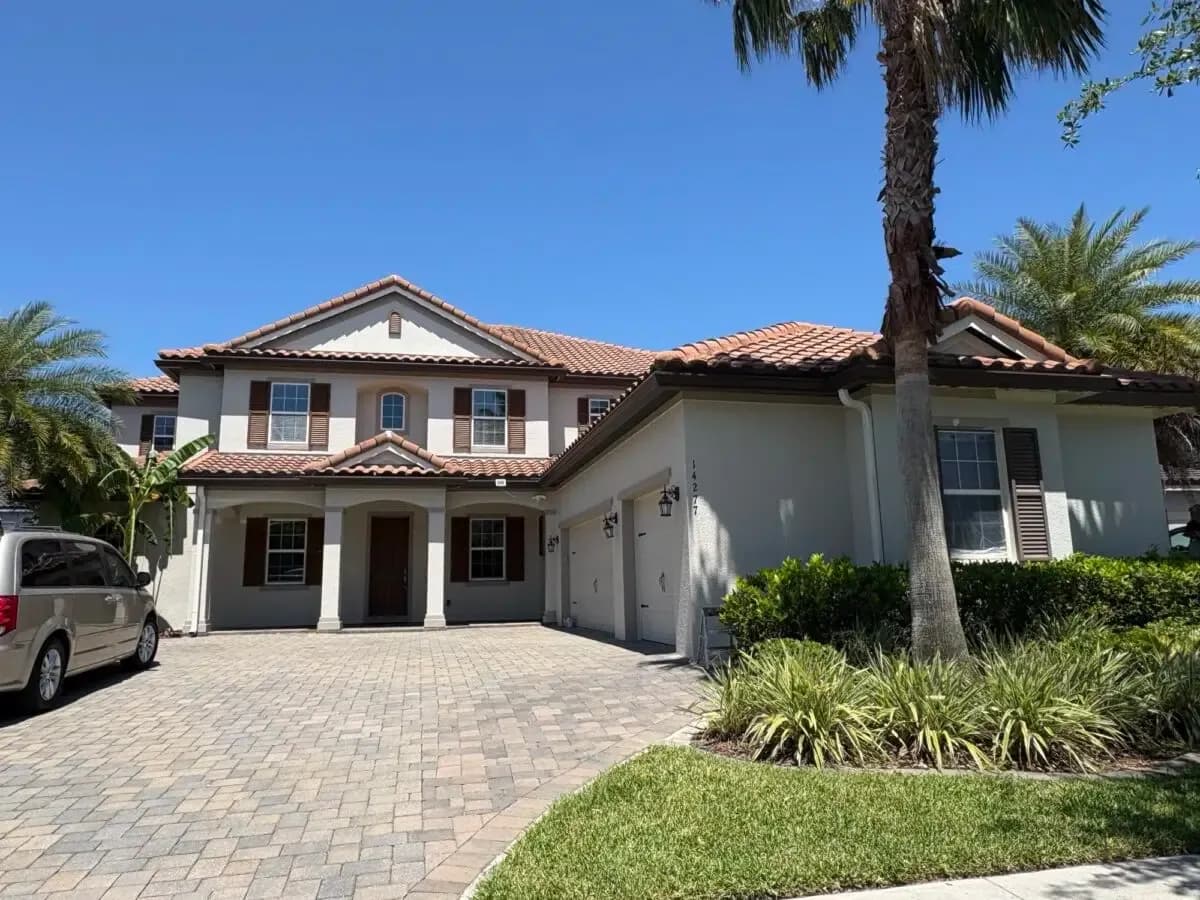
3. Skipping the Primer
Want to know how to prevent paint blistering on siding? Start with proper prep—and that includes primer. It helps seal raw wood, fills in porous spots, and builds a strong base for your color coat.
I’ve seen beautiful homes in Carmel get repainted in less than a year because primer was skipped. And the worst part? Bubbling often starts under window trim and fascia boards, where moisture sneaks in first.
Use a primer that’s built for exterior conditions and tailored to your siding type.
4. Choosing the Wrong Paint
Why does paint bubble in humid weather? Sometimes it’s the paint itself. Not all paints are made for humid climates or the freeze-thaw cycles we get in spring.
If you’re painting wood, fiber cement, or stucco, you’ll need a product with flexibility and breathability. Otherwise, trapped moisture can lead to paint bubbling on stucco or wood siding.
Choose a paint that’s made for your surface—and don’t go for the cheapest option on the shelf. Quality matters, especially this time of year.
5. Ignoring Surface Prep
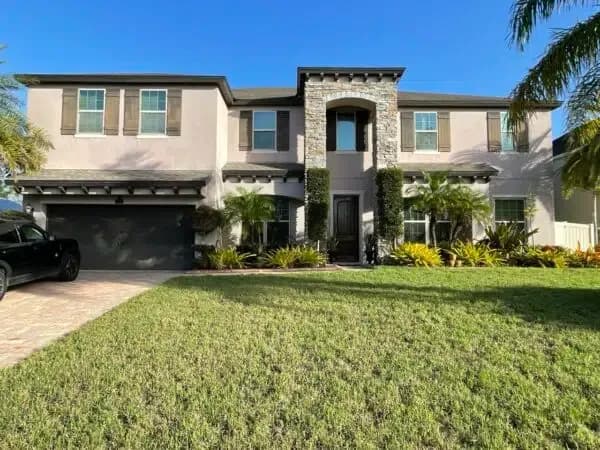
How to prep walls to prevent bubbling? Clean thoroughly, scrape off any peeling sections, sand where needed, and let it dry. Skipping even one of these steps can result in adhesion issues, peeling, and eventually bubbling.
We’ve done jobs where the last painter barely rinsed off the mildew. Paint doesn’t stick to pollen, dust, or chalky surfaces. So if you want to avoid paint problems in spring, start with a clean, sound base.
6. Painting Without a Weather Game Plan
This isn’t the season to paint on a whim. Painting tips for spring weather conditions always start with one thing: check the forecast. Again and again.
If it’s too cold overnight or too humid during the day, hold off. Rain within 24 hours before or after you paint is a huge risk. Your paint needs time to settle and bond, not battle moisture the moment it’s applied.
A little patience now will save you a ton of frustration later.
7. Hiring the Wrong Painter
Not every exterior house painter understands how weather impacts exterior painting during spring. And unfortunately, some companies push ahead to meet deadlines—even when the conditions aren’t right.
If your contractor doesn’t mention drying times, prep work, or forecast windows, be cautious. We’ve had to redo entire homes painted during a stretch of off-and-on rain.
Always ask: What’s your plan for weather delays? How do you decide when it’s safe to paint?
Spring House Painting Tips That Actually Work
Let’s recap some easy ways to get ahead of spring exterior painting troubles:
- Pick a dry 3–5 day window on the forecast
- Only paint when temps stay above 50°F—even overnight
- Never paint wet or recently washed siding
- Always use primer when painting raw or uneven surfaces
- Choose the right paint for your material and climate
- Thoroughly prep and clean all surfaces beforehand
Even the best paint won’t stick to dirt, water, or soft spots in your siding. Preparation is the difference between a job that lasts five years and one that fails in five months.
Why Is My Paint Bubbling?
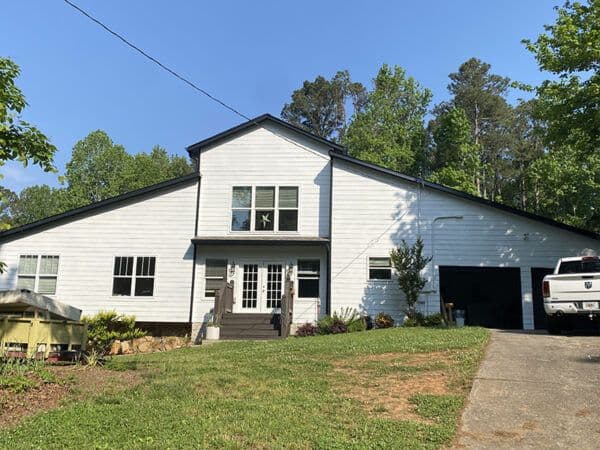
Still asking that question? You’re not alone. It’s one of the top reasons people reach out to us in spring. What causes paint to bubble after painting often comes down to shortcuts or bad timing.
Here are a few red flags:
- Paint feels soft or sticky days later
- You notice raised blisters under the surface
- The color looks patchy or cloudy
If that’s what you’re seeing, you might need a fix. We can tell you how to fix bubbling paint—or better yet, help you avoid it altogether.
Sharper Impressions Knows How to Paint Carmel Homes Right
You want your home to look sharp this spring. But painting the exterior isn’t just about color—it’s about timing, prep, and making smart calls when the weather shifts.
At Sharper Impressions Painting of Indianapolis, we don’t just throw on a coat and call it done. We plan around the forecast, prep every surface the right way, and use materials that hold up in Indiana’s spring swings.
We serve Carmel, Noblesville, Fishers, and surrounding areas—and we’ve handled all kinds of siding, weather, and surfaces. Whether it’s paint bubbling, peeling, or starting from scratch, we’ve seen it and fixed it.
Give us a call at 317-707-6672 for a FREE estimate and get your house ready for spring the smart way.
May 14, 2025
About the Author: Joseph Steele
Hi, I’m Joseph Steele, with Sharper Impressions Painting. We proudly offer high-quality interior and exterior painting services for homes and businesses in Atlanta, Columbus, Orlando, Indianapolis, Kansas City, and Nashville. From cabinet painting to deck and fence staining, we’re here to enhance your space. Learn more about us here.
See what others have to say
Above All, Our Customers Come First…
Sharper Impressions Painting is a painting contractor with over 32 years of residential painting experience along with an impressive reference list from satisfied customers. Your home is your most valuable asset and our respectful painting team will make it look great and keep it protected for a long time.
Our Locations
